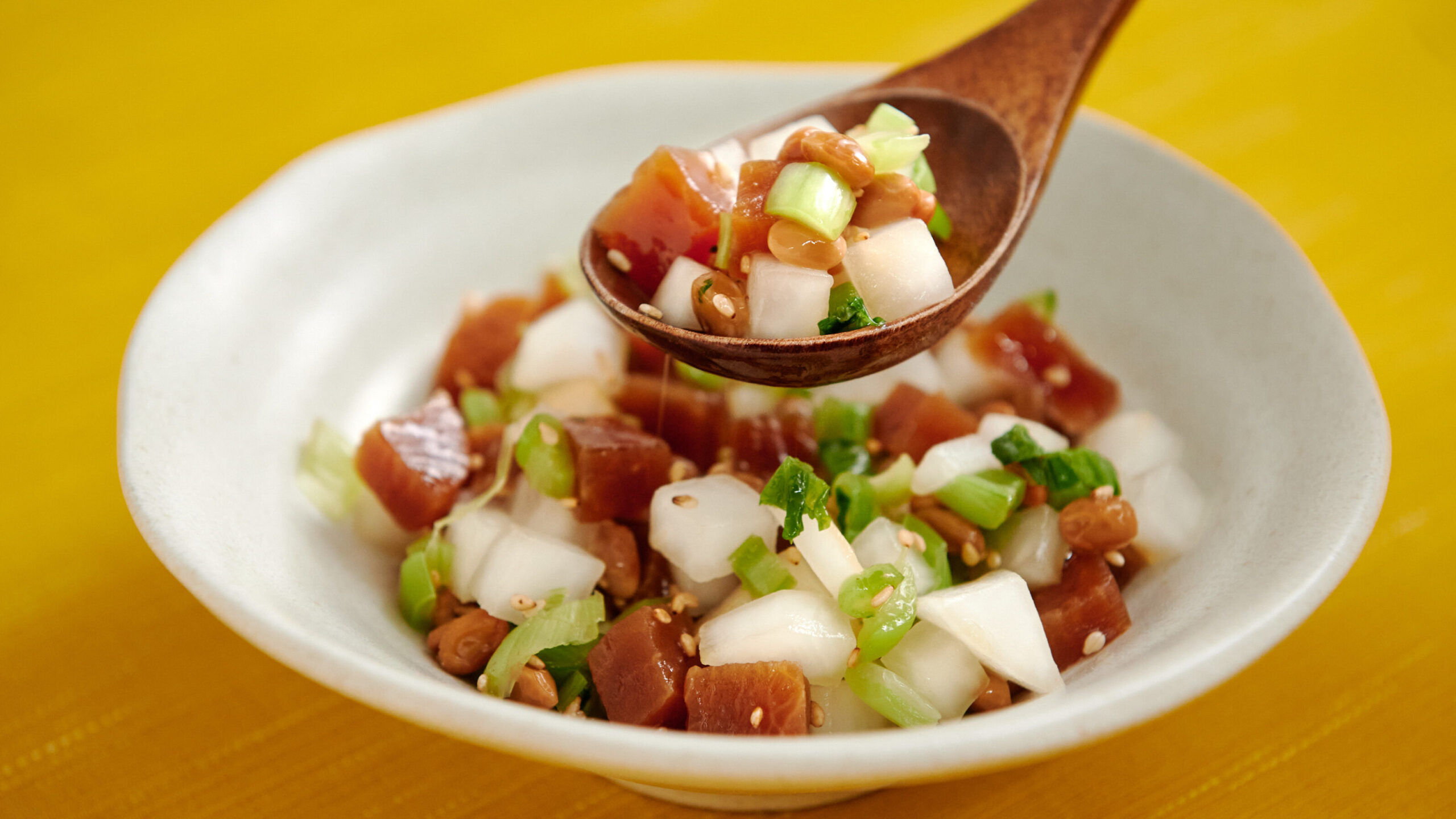
So, let’s talk about a dish that’s all about making the most of what you’ve got – Kirizai! This Niigata specialty is a hearty mix of chopped vegetables and natto (fermented soybeans), and it tells a story of resourcefulness and delicious simplicity. It’s a dish with a surprisingly long history, too!
Dish Name: Kirizai (きりざい)
- Primary Area of Tradition: Chuetsu region
- Main Ingredients: Nozawana (leaf mustard), daikon radish, natto (fermented soybeans), sesame seeds
How It’s Eaten / Served
Kirizai is a local dish from the Uonuma region, made by mixing chopped vegetables with natto. The name “Kirizai” comes from “kiri” (切), meaning “to cut,” and “zai” (さい), referring to “sai” (菜), meaning “vegetables.” Its history goes way back, with records indicating that samurai carried it as provisions during the Warring States period. The Minamiuonuma region is known for its heavy snowfall, which historically led to a reliance on preserved foods like pickles and dried goods. During times when meat and fish were scarce, natto, a good source of protein, was highly valued. Kirizai is said to have originated from the practice of finely chopping leftover pickles and vegetables to increase their volume when combined with natto. It’s a dish born from the wisdom of grandmothers, using readily available vegetables and valuing even the scraps. Kirizai’s easy preparation and nutritional value made it an important source of nutrients for people living in a harsh natural environment. The preparation of Kirizai varies slightly from household to household, with many variations depending on personal preferences and available ingredients.
Cultural Background and Preservation
Kirizai is eaten year-round, not limited to any specific season. It’s enjoyed as a side dish with rice or as a snack, using a variety of vegetables and seasonal ingredients. To prepare Kirizai, chopped nozawana, daikon radish, and other vegetables are mixed with natto. Nozawana pickles are a key ingredient, and takuan (pickled daikon radish) is sometimes used instead of fresh daikon. Other ingredients, such as ikura (salmon roe) or minced tuna, can also be added. Kirizai also pairs well with other sticky foods like grated yam, mekabu (wakame seaweed stems), or okra, similar to how natto is often eaten.
In Minamiuonuma City, there are local groups promoting Kirizai to revitalize the town. One group has defined “Minamiuonuma Kirizai” as containing five essential ingredients: nozawana, sesame seeds, salmon, takuan, and natto. They have launched a “morning rice” project and actively share information about events and town revitalization efforts to promote the appeal of Kirizai nationwide.
Additional information:
- Nozawana (野沢菜): A type of leaf mustard, often pickled.
- Daikon (大根): A large white radish.
- Takuan (たくあん): Pickled daikon radish.
- Ikura (イクラ): Salmon roe.
- Mekabu (めかぶ): The flowering stem of wakame seaweed, known for its sticky texture.
The information about regional cuisine featured on this website (Piggy's Grandma of Japan) is summarized and adapted from the Ministry of Agriculture, Forestry and Fisheries of Japan (MAFF) website, "Our Regional Cuisines"Additional commentary is provided based on the unique experiences and perspectives of the site's editors.
The copyright for the original content regarding regional cuisine belongs to the Ministry of Agriculture, Forestry and Fisheries of Japan.
The summaries and adaptations published on this site are intended for informational purposes only. Piggy's Grandma of Japan does not guarantee the accuracy or completeness of this information. For the most accurate and complete details, please refer to the original pages on the MAFF website.

